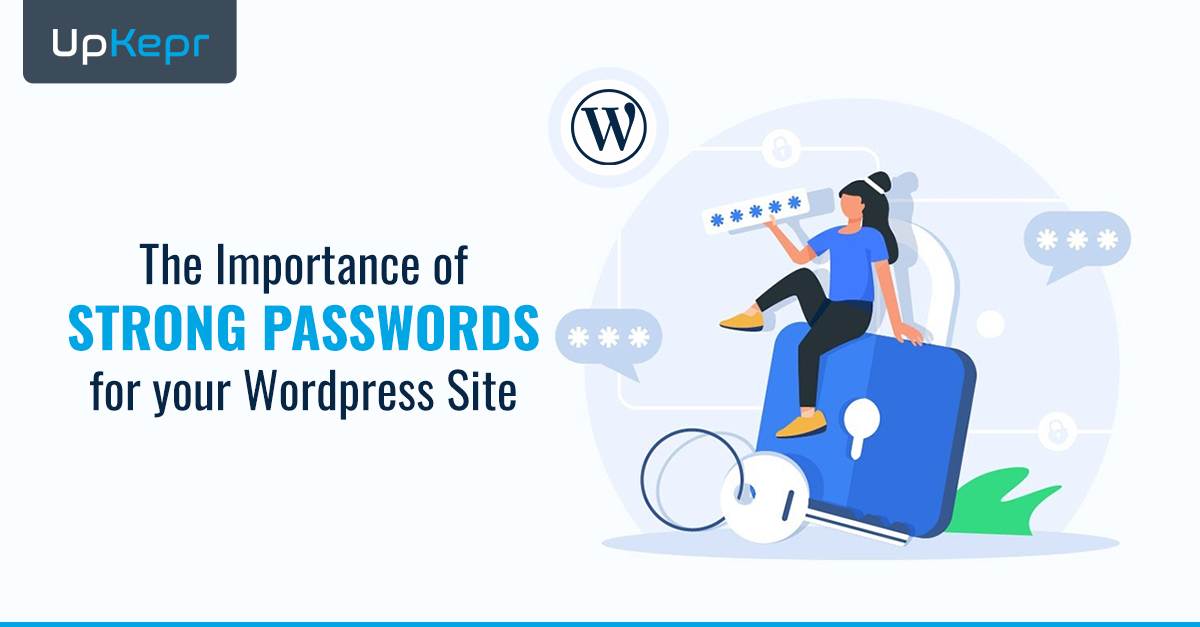
Common Website Health Issues and How to Fix Them

A healthy website is crucial for optimal performance, security, and user experience. However, various issues can negatively impact your website, leading to slow loading times, poor search rankings, and security vulnerabilities. Regular maintenance and proactive monitoring can help prevent potential problems. In this guide, we will explore common website health issues and provide actionable solutions to fix them.
Want to dive deeper? Check out our in-depth guide on common website health issues to ensure your website stays optimized, secure, and high-performing!
1. Slow Website Speed
Issue:
A slow-loading website can frustrate users, leading to high bounce rates and lower search engine rankings. Page speed is a critical ranking factor in Google's algorithm, and a sluggish site can impact user engagement, conversions, and overall credibility. Studies show that users expect a website to load within 2-3 seconds, and any delay beyond this can significantly reduce traffic and revenue.
Fix:
-
Optimize Images – Compress images using tools like TinyPNG or ImageOptim to reduce file sizes without compromising quality.
-
Enable Browser Caching – Store static files so returning visitors load pages faster, reducing server requests and load time.
-
Use a Content Delivery Network (CDN) – Distribute content across multiple servers to ensure fast and reliable content delivery worldwide.
-
Minimize HTTP Requests – Reduce unnecessary elements like scripts, fonts, and third-party integrations to speed up page loads.
-
Optimize Code – Minify CSS, JavaScript, and HTML to remove unnecessary characters, spaces, and comments.
-
Upgrade Hosting – Choose a fast and reliable web hosting service that provides high-performance servers and optimized configurations.
-
Reduce Redirects – Too many redirects can slow down loading times, so ensure you minimize them where possible.
2. Poor Mobile Optimization
Issue:
More than half of web traffic comes from mobile devices, and if your website is not mobile-friendly, you risk losing a significant portion of your audience. A website that doesn't adapt to different screen sizes can lead to poor user experience, higher bounce rates, and lower conversion rates. Google also prioritizes mobile-friendly sites in search rankings, making it essential to optimize for mobile.
Fix:
-
Use Responsive Design – Ensure your website adjusts seamlessly to different screen sizes by using flexible grids and layouts.
-
Optimize Touch Elements – Make buttons, links, and interactive elements easily clickable without zooming or misclicking.
-
Improve Mobile Speed – Use Google’s PageSpeed Insights to analyze and fix mobile loading issues like render-blocking resources and unoptimized assets.
-
Optimize Fonts and Media – Ensure fonts are legible and media elements (images, videos) are appropriately scaled for mobile screens.
-
Enable Accelerated Mobile Pages (AMP) – Implement AMP for faster loading times on mobile devices, improving user experience and SEO rankings.
3. Broken Links
Issue:
Broken links negatively impact user experience and SEO rankings. They occur when pages are deleted, URLs change without proper redirection, or external sites move their content. This can lead to frustrated visitors, decreased credibility, and lost opportunities for conversions.
Fix:
-
Use Online Tools – Utilize UpKepr website health checker free tool to identify broken links and keep your site error-free.
-
Implement 301 Redirects – Redirect old pages to new URLs to preserve link equity and ensure users land on the right content.
-
Regularly Audit Links – Perform periodic link checks using tools like Google Search Console or Screaming Frog to detect and fix broken links promptly.
-
Update Internal Links – Ensure all internal links are pointing to valid pages and not leading to outdated or removed content.
4. Security Vulnerabilities
Issue:
Cyberattacks, malware, and data breaches pose serious threats to websites, potentially leading to financial losses, reputation damage, and loss of user trust. Websites without proper security measures are vulnerable to hacking, phishing, and other malicious activities.
Fix:
-
Use HTTPS – Install an SSL certificate for secure data transmission and protection against interception.
-
Update Software – Regularly update your CMS, plugins, and themes to fix security vulnerabilities and improve functionality.
-
Enable Firewalls and Security Plugins – Tools like Wordfence (for WordPress) and Sucuri enhance security by blocking malicious traffic and threats.
-
Conduct Security Audits – Use UpKepr to check website health status and identify vulnerabilities before they become serious issues.
-
Use Strong Passwords – Implement complex passwords and multi-factor authentication (MFA) to enhance security measures.
-
Regular Backups – Schedule automatic backups to ensure you can restore your website in case of an attack or data loss.
5. Poor SEO Health
Issue:
A website with poor SEO health will struggle to rank on search engines, reducing organic traffic and online visibility. SEO issues include duplicate content, missing meta tags, slow loading speeds, and poor keyword optimization.
Fix:
-
Optimize Meta Tags – Include relevant title tags, meta descriptions, and structured data to improve search rankings.
-
Improve Content Quality – Write high-quality, keyword-rich content that addresses user intent and provides valuable insights.
-
Fix Technical SEO Issues – Use tools like UpKepr to check SEO health of website and resolve indexing or on-page SEO issues.
-
Improve Internal Linking – Strengthen your site's structure for better navigation, reduced bounce rates, and increased engagement.
-
Eliminate Duplicate Content – Ensure all pages contain unique, well-structured content to avoid penalties from search engines.
6. Excessive Pop-Ups and Ads
Issue:
Too many pop-ups and ads can frustrate visitors, leading to high bounce rates and a negative user experience. Intrusive ads can also reduce trust and credibility, making users less likely to engage or convert.
Fix:
-
Limit Pop-Ups – Use them sparingly, ensure they are easy to close, and display them at the right moment (e.g., exit intent or after a delay).
-
Avoid Intrusive Ads – Stick to non-intrusive placements that do not disrupt navigation or reading flow.
-
Optimize Ad Placement – Ensure ads do not slow down the website, affect mobile responsiveness, or cover essential content.
-
A/B Test Pop-Ups – Experiment with different pop-up types, timing, and content to maximize engagement without annoying users.
-
Follow Google’s Guidelines – Avoid interstitials that harm SEO rankings and user experience.
7. Outdated Content
Issue:
Old and irrelevant content can harm your website’s credibility, reduce user trust, and negatively impact SEO rankings. Search engines prioritize fresh, relevant content, and outdated information can lead to lost traffic and engagement.
Fix:
-
Regular Content Audits – Schedule periodic reviews to update, improve, or remove outdated content.
-
Repurpose Old Content – Refresh old articles with updated statistics, new insights, and improved visuals.
-
Ensure Accuracy – Fact-check regularly to maintain relevance and reliability.
-
Optimize for SEO – Update keywords, internal links, and formatting for better visibility.
-
Enhance Engagement – Add multimedia like images, videos, or infographics to improve readability.
8. Poor Website Navigation
Issue:
Confusing or cluttered navigation can frustrate visitors, making it difficult for them to find what they need. This can lead to high bounce rates, lower engagement, and lost conversions.
Fix:
-
Simplify Menus – Keep navigation intuitive with clear, well-organized categories. Avoid too many dropdowns.
-
Use Breadcrumbs – Help users track their location and easily navigate back.
-
Improve Search Functionality – Ensure a fast, accurate search bar with filters.
-
Optimize for Mobile – Make navigation seamless on all devices.
-
Use Clear CTAs – Guide users with buttons and links to essential pages.
9. High Bounce Rate
Issue:
A high bounce rate indicates that visitors leave your website quickly without engaging, which can signal poor user experience, slow loading times, or irrelevant content. This can hurt SEO rankings and lower conversions.
Fix:
-
Improve Content Relevance – Ensure content aligns with user intent and provides value.
-
Enhance User Experience – Use clear layouts, engaging visuals, and easy navigation.
-
Optimize Load Speed – Compress images, enable caching, and minimize scripts for faster performance.
-
Use Strong CTAs – Encourage users to explore more pages.
-
Ensure Mobile-Friendliness – A responsive design improves retention across devices.
10. Server Downtime
Issue:
Frequent website downtime can lead to lost traffic, revenue, and credibility issues. It negatively impacts user experience and SEO rankings, making it harder for visitors to trust your site.
Fix:
-
Choose Reliable Hosting – Invest in a reputable hosting provider with high uptime guarantees.
-
Monitor Uptime – Use tools like UpKepr to track uptime and detect issues early.
-
Optimize Server Performance – Ensure proper configurations, allocate resources efficiently, and use content delivery networks (CDNs) for faster access.
-
Regular Maintenance – Update software, plugins, and security patches to prevent crashes.
-
Have a Backup Plan – Implement automated backups to quickly restore your site if needed.
Conclusion
A well-maintained website is essential for security, speed, SEO, and user experience. Regularly monitoring and fixing issues can help you stay ahead of competitors and provide a seamless experience for visitors. UpKepr offers a comprehensive solution to check SEO health of website, identify security vulnerabilities, and ensure optimal performance. Run a website health checker free scan today and keep your website in peak condition to boost search rankings, enhance user satisfaction, and drive better business results.



























































































 Sign Up with Google – Free
Sign Up with Google – Free Sign Up with Github – Free
Sign Up with Github – Free